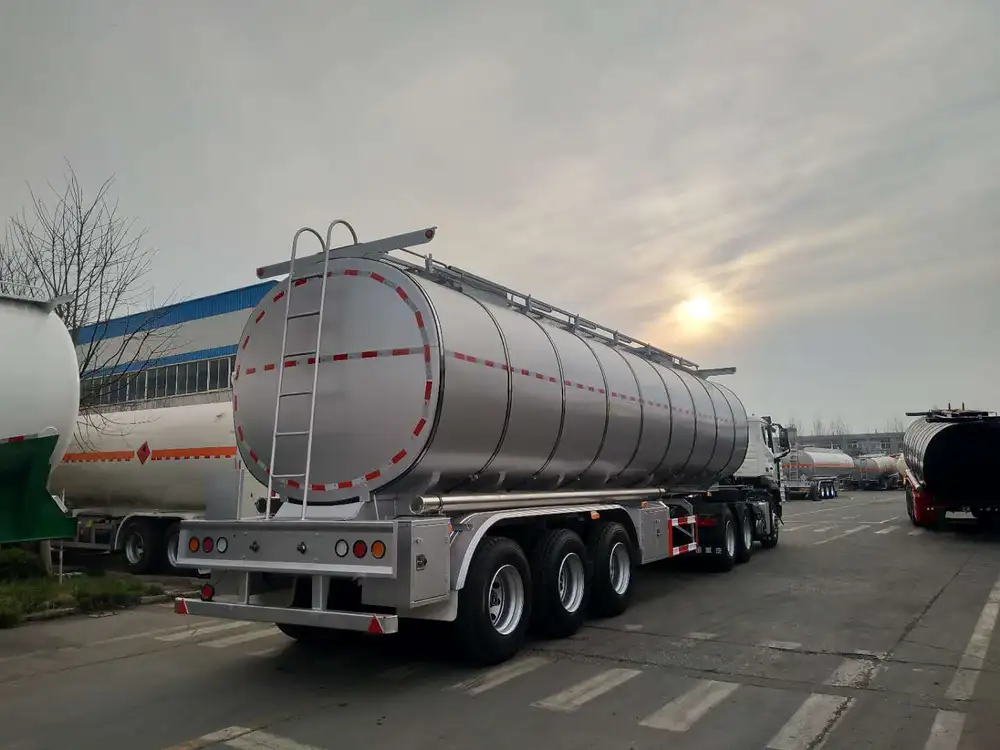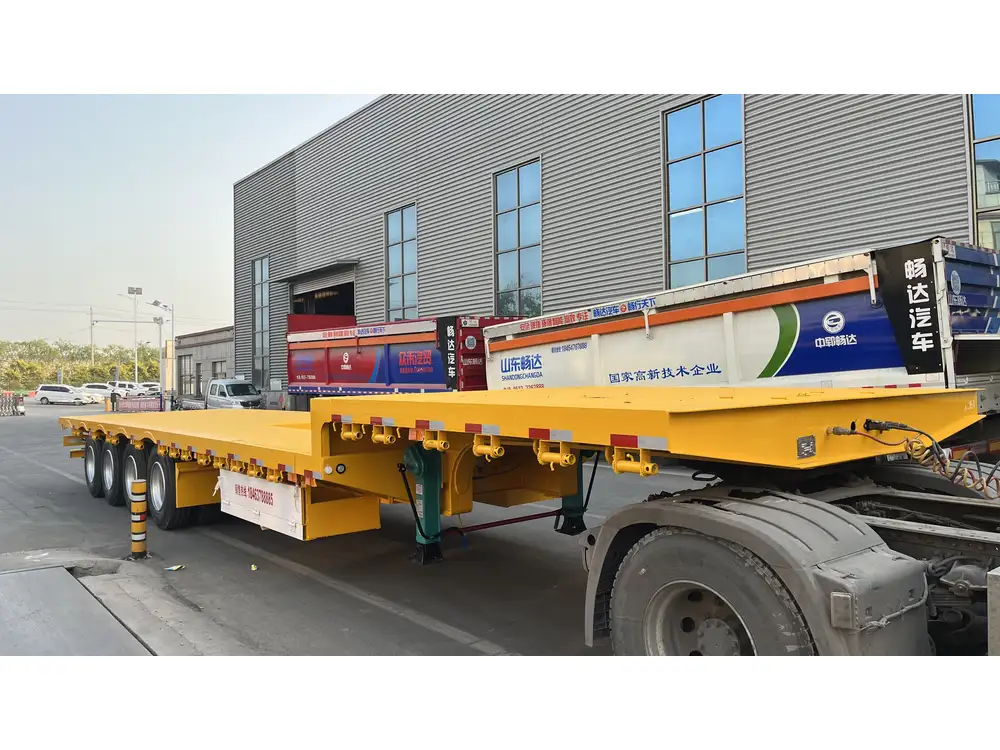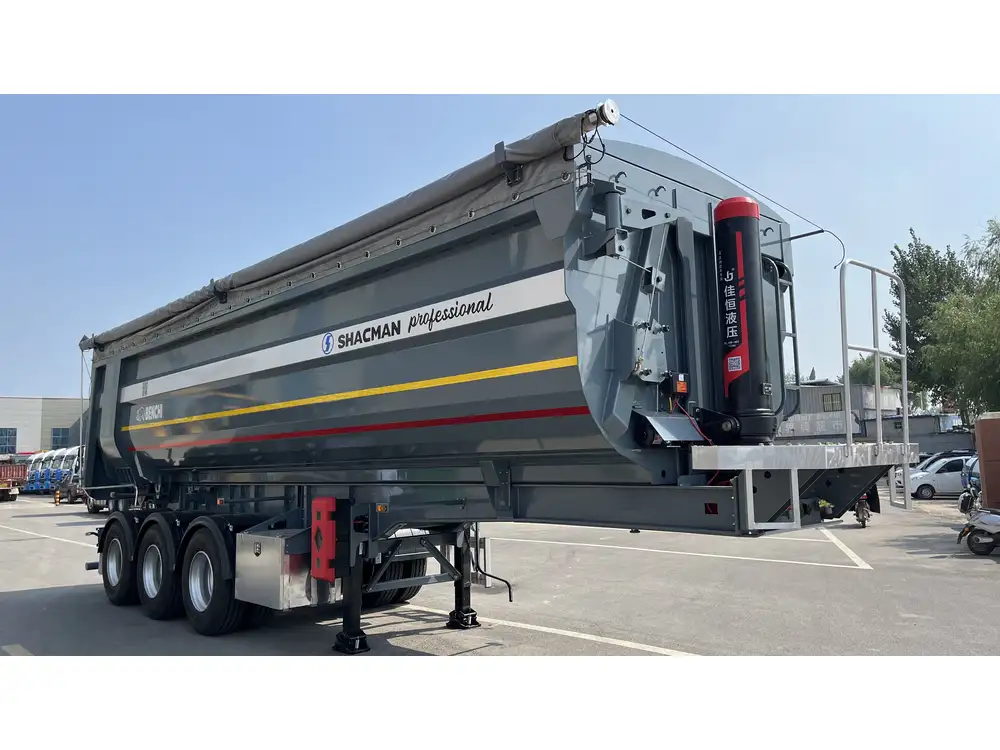When it comes to logistics and transportation, one of the most frequently asked questions is, “How many cubic feet is a semi-trailer?” This inquiry is not merely a query about measurements; it encompasses a deeper understanding of cargo space, weight distribution, and the implications of capacity on transport efficiency. In this comprehensive article, we will delve into the intricacies of semi-trailer cubic footage, the variations among different types, and how these details influence operational decisions.
The Basics of Semi-Trailer Dimensions
Standard Dimensions of Semi-Trailers
Before calculating cubic footage, it’s crucial to know the standard dimensions of semi-trailers. The length, width, and height of a semi-trailer can significantly affect its capacity:
| Dimension | Measurement (ft) |
|---|---|
| Length | 48 – 53 |
| Width | 8.5 |
| Height | 13.5 |
Most semi-trailers have an internal height of about 110 inches (approximately 9.2 feet), although this can vary slightly based on the design and manufacturer.

Calculating Cubic Feet
To calculate the cubic feet of a semi-trailer, use the formula:
[ \text{Cubic Feet} = \text{Length (ft)} \times \text{Width (ft)} \times \text{Height (ft)} ]For example, a standard 53-foot semi-trailer with the given dimensions would be calculated as follows:
[ \text{Cubic Feet} = 53 \times 8.5 \times 9.2 = 4,158.6 \text{ cubic feet} ]This straightforward calculation reveals that a normal semi-trailer can carry more than 4,000 cubic feet of cargo, which is a substantial capacity for freight transportation.
Variations in Semi-Trailer Types
Reefer Trailers
Reefer trailers, designed to transport temperature-sensitive cargo, are often configured differently to maximize insulation and refrigeration needs. Their internal capacities might be slightly less due to additional insulation materials, but generally, they still maintain a cubic foot capacity similar to standard trailers.

Flatbed Trailers
Unlike enclosed trailers, flatbed trailers do not have sides and tops, leading to different loading techniques and cargo compatibility. Their measurement still translates into cubic footage, but the shape of the cargo may alter the effective use of space.
Specialty Trailers
Specialty trailers—for example, those designed for specific industries (like car hauliers or tankers)—may deviate significantly from traditional measurements. Understanding the cubic footage of these trailers requires additional consideration of their unique shapes and design features.
Understanding Load Weight vs. Volume

The Role of Weight in Transportation
When considering how many cubic feet is a semi-trailer, it’s essential to look beyond mere volume. The payload capacity, often expressed in pounds, is equally crucial. A standard 53-foot semi-trailer may have a payload capacity of about 45,000 pounds; however, this can vary based on axle specifications and weight regulations.
Balancing Weight and Volume
Flexibility is vital in logistics. A load can be limited by either weight or volume. For example, if a cargo takes up 40 cubic feet but weighs only 1,000 pounds, it may not substantially impact the trailer’s weight limit; however, if another cargo occupies 900 cubic feet and weighs 44,000 pounds, it would exceed the payload capacity.
Historical Context
Historically, the conversation around cubic feet versus weight has evolved. Regulations concerning weight limits were introduced to ensure road safety and vehicle longevity while controlling infrastructure wear. Understanding these guidelines can aid in efficient load planning.

Effective Space Utilization
Strategies for Maximizing Cubic Feet
To ensure that a semi-trailer is utilized efficiently, consideration must be given to the type of cargo being transported. Here are some strategies:
- Stacking: Utilizing vertical space can maximize cargo without exceeding weight limits.
- Custom Palletization: Design pallets that conform to the trailer’s interior dimensions to prevent wasted space.
- Cargo Securing: Use straps and nets to prevent movement during transit, allowing for tighter spacing.
The Consequences of Improper Loading
Failing to maximize space effectively can lead to issues such as increased transport costs, potential for cargo damage, and greater carbon emissions per unit of freight transported. Additionally, improperly loaded trailers can affect the vehicle’s handling and safety.

Regulatory Considerations
Understanding DOT Regulations
The U.S. Department of Transportation (DOT) regulates semi-trailer dimensions and weight limits. Adhering to these regulations is essential for legal compliance and safety. Overloading can result in fines, increased scrutiny from authorities, and safety hazards.
State-by-State Variations
It’s also prudent to note that regulations can vary by state, affecting everything from maximum allowed lengths and weights to specific requirements for specialty trailers. Being informed can save time and prevent unexpected logistical challenges.

Future Trends in Trailer Design
Innovations in Materials
The advancement of lightweight materials may significantly alter how cubic feet are perceived in the future. By reducing the weight of the trailer itself, manufacturers can legally haul heavier loads without exceeding weight limits.
Technological Integrations
Incorporating technology, such as load planning software and real-time tracking, can enhance how operators utilize cubic space. Enhanced visibility into load capacities allows for better decision-making and increased efficiency in logistics operations.

Environmental Considerations
As the industry shifts towards more sustainable practices, optimizing the dimensions and capacities of semi-trailers can be part of a larger ecological effort. Using energy-efficient vehicles and reducing the number of trips required can contribute to lowering overall emissions.
Conclusion
Evaluating “how many cubic feet is a semi-trailer?” should extend beyond simple calculations. A comprehensive understanding of dimensions, weight considerations, cargo types, regulations, and technological advancements is vital for optimizing logistics strategies. This awareness empowers manufacturers and operators to make informed decisions that enhance efficiency, safety, and compliance in the transportation industry. By embracing these principles, businesses can improve operational excellence and cater more effectively to their customers’ needs.
Whether you’re a logistics manager, truck driver, or supply chain professional, grasping the full picture surrounding semi-trailer capacities can lead to better decision-making and increased success in your transportation endeavors.



